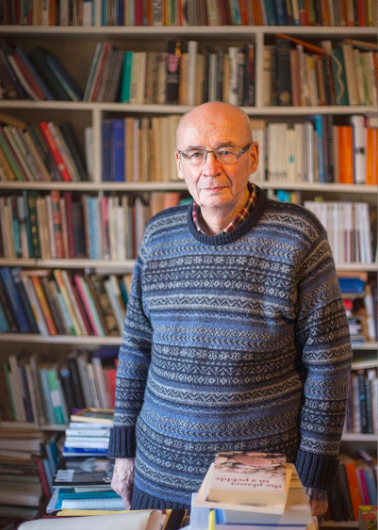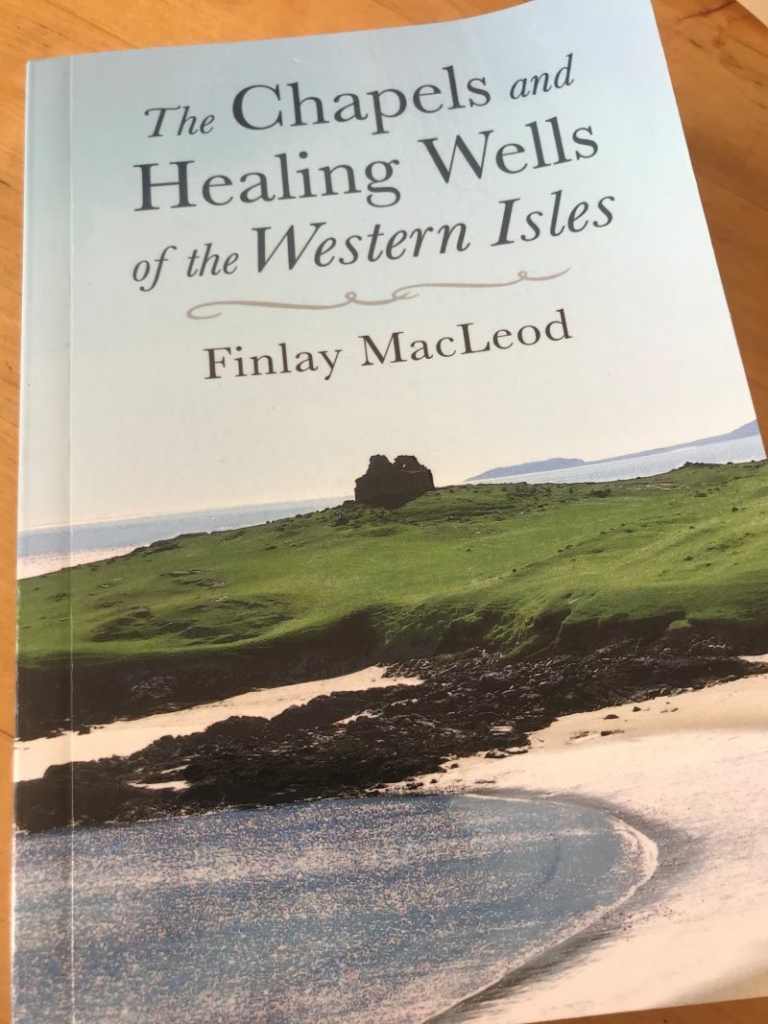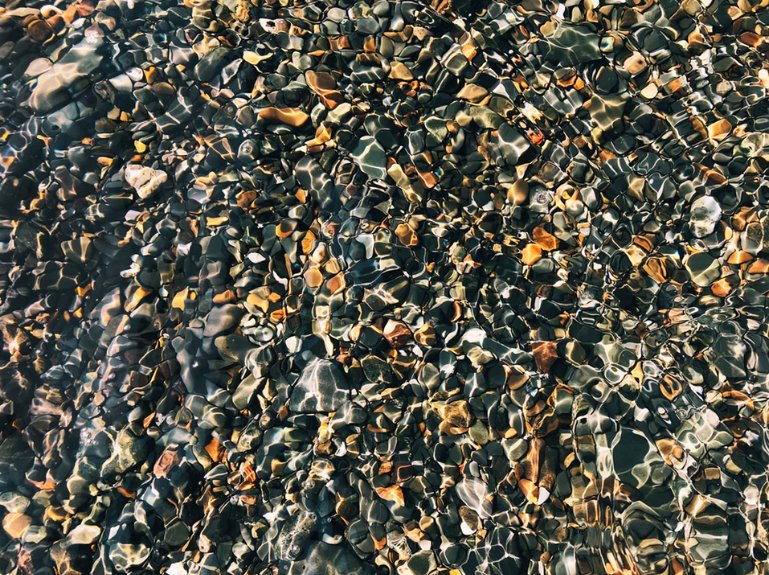Remembering Finlay Macleod
Finlay Macleod of Shawbost and Adabrock has passed away in Stornoway after a remarkable life. He was known as a talented polymath, a champion of gaelic, a historian and a researcher and carrier of invaluable knowledge and tradition. There’s a tribute here and the BBC has run an obituary in Gaelic of Finlay here.

Finlay Macleod co-wrote “Some Lewis Moorland Terms: A Peat Glossary” (a “counter-desecration phrasebook”) with Anne Campbell, Catriona Campbell and Donald Morrison and The Chapels and Healing Wells of the Western Isles (Acair Books).

The author Robert Macfarlane wrote:
“My friend Finlay MacLeod died yesterday, peacefully. He was a Gaelic writer, teacher, historian, archaeologist, intellectual & cartographer––& a quietly towering figure in Gaelic culture. A man of huge kindness & wit. A mentor to me & many.”
His work was in part the basis for Macfarlane’s bestselling Landmarks (Penguin, 2015) which attempted to halt (or stall) the degradation of land and language which Macfarlane had observed in the “culling of words concerning nature”, in the Oxford Dictionary with a comparable increase in words related to electronics, resulting in “the outdoor and the natural being displaced by the indoor and the virtual”.
“This is a book about the power of language,” Macfarlane wrote. “…a field guide to literature I love, and it a word hoard of the astonishing lexis for landscape that exists in the comparison of islands, rivers, strands, fells, lochs, cities, towns, corries, hedgerows, fields and edgelands uneasily known as the British Isles.”
“This is not to suggest that we need adopt either a literal animism or a systematic superstition; only that by instrumentalising nature, linguistically and operationally, we have largely stunned the earth out of wonder,” he wrote in his opening chapter.

The collaboration between Macleod and Macfarlane resulted in an online phenomenon of the ‘Word of the Day’, my favourite being: “èit” – “the practice of placing quartz stones in streams so they sparkle in moonlight & thereby attract salmon to them in late summer & autumn” (Gaelic, esp. the Isle of Lewis).

Others include caochan a slender moor-stream obscured by vegetation feith – a watercourse running through peat, the form of which resembles veins or sinews; bugha – a green, bow-shaped area of moor grass formed by the winding of a stream; and rionnach maoim – shadows cast on the moorland by clouds moving across the sky on a bright and windy day.
Words are powerful.
As the poet John Burnside wrote:
“Macleod notes that “as people’s working relationship with the moorland has changed, the keen sense of conservation that went with it has atrophied”. With the glossary as their chief weapon, however, the Lewis islanders fought off the threat of 234 wind turbines, each 140 metres high (a development proposed by the Amec corporation) by drawing together “accounts – narrative, lexical, poetic, painterly, photographic, historical, cartographical – which, taken in sum or interleaved, might restore both particularity and mystery to the moor”, and thus counter the views of people like James Carnegy-Arbuthnott, an estate owner in Angus, who claimed that it was fine for so few people to own so much of Scotland because it was mostly “unproductive wilderness”.
Macleod’s legacy is vast and generous.

Many thanks Mike for portraying the collaboration and for the link to the film. Remembering Finlay speaking after an operation to his throat –
in the open air at the restored Norse Mill in Siabost – my friend Louise Halfe, visiting poet of Cree Nation background,
and her husband were deeply moved by Finlay’s voice, commitment and knowledge. That voice came back strong
after illness and it seemed his inner energy was undiminished.
Hi Ian – thanks for that. Were you involved in the film?
Abair Gaisgeach ! A fitting tribute to a wonderful Leòdhasach polymath and champion of language, land and culture.
I think the film however was made by Iain Finlay Macloed and not our “Dr Finlay”.
Oh no, sorry, will check
Ah – just been told that this film was made by Iain Finlay Macleod (who I believe is Finlay’s nephew). Apologies. Edited that.
Iain Finlay is indeed Finlay’s nephew. I can’t see which film you’re referring to, but likely Finlay’s influence still there. Thanks for the kind words, I’ll pass on.
Thanks Sandra – we had mistakenly embedded a film and mixed up our Finlay’s
I’m sure they’d both be fine with that! Which film was it?
Hi Sandra – its this one here: https://www.nationaltheatrescotland.com/events/car-a-mhuiltein-somersaults